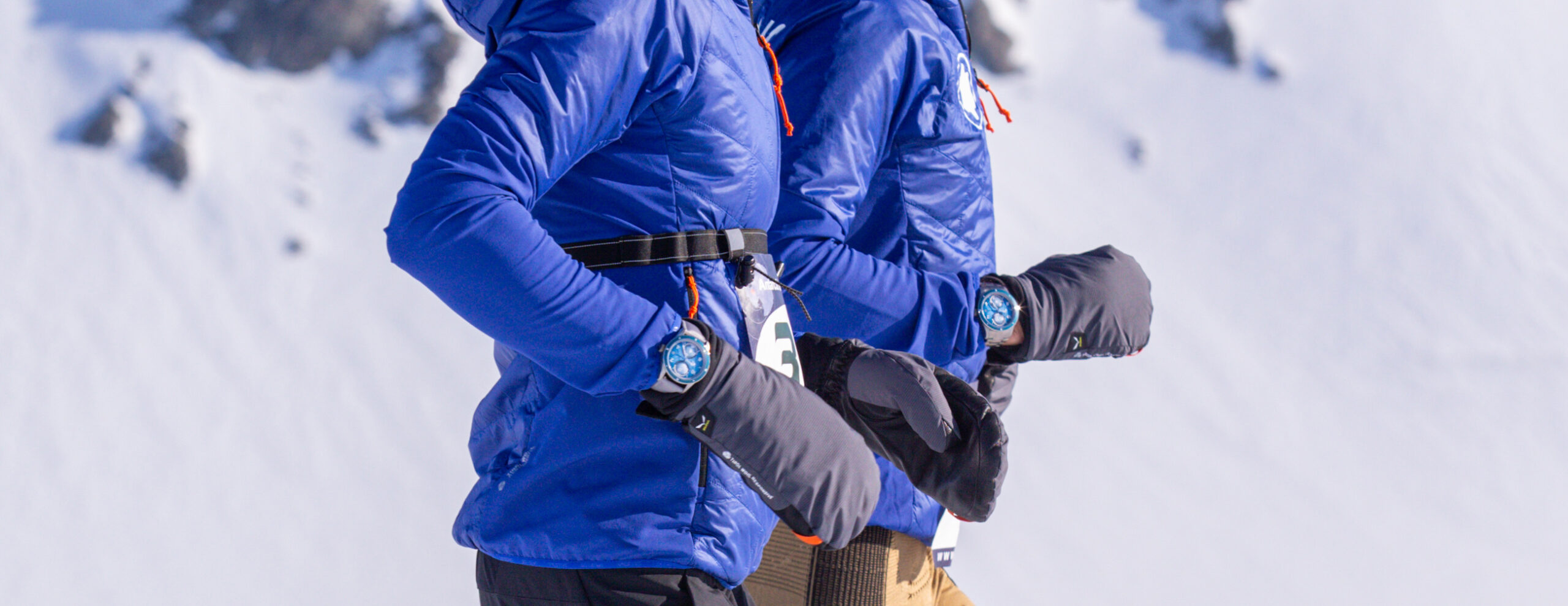Interviews
Running an Ice Marathon in Antarctica? This Is the Watch You Need
Interviews
Running an Ice Marathon in Antarctica? This Is the Watch You Need
People have many reasons for undertaking such extreme endeavors. For Messner and Lecamp, one of those was to test and call attention to Montblanc’s rugged world time watch made expressly for mountain climbing and extreme cold, the 1858 Geosphere Zero Oxygen. It’s the latest iteration of a concept Montblanc pioneered: a watch with a case completely free of oxygen.
Why does a watch need to be oxygen-free? It means you won’t find the crystal fogging up with moisture in the frighteningly frigid conditions of mountains or glaciers. It’s an issue which adventurers such as Messner and Lecamp can attest to.
Neither Messner nor Lecamp is any stranger to cold or extreme sports. Simon is the son of legendary mountaineer Reinhold Messner and an accomplished alpinist in his own right, as well as a Montblanc brand ambassador. He’d never run a marathon before. Laurent Lecamp, on the other hand, is an experienced marathon runner and the Global Managing Director of Montblanc’s Watch Division. It’s worth noting that not every watch executive accompanies brand ambassadors on the likes of grueling arctic adventures.
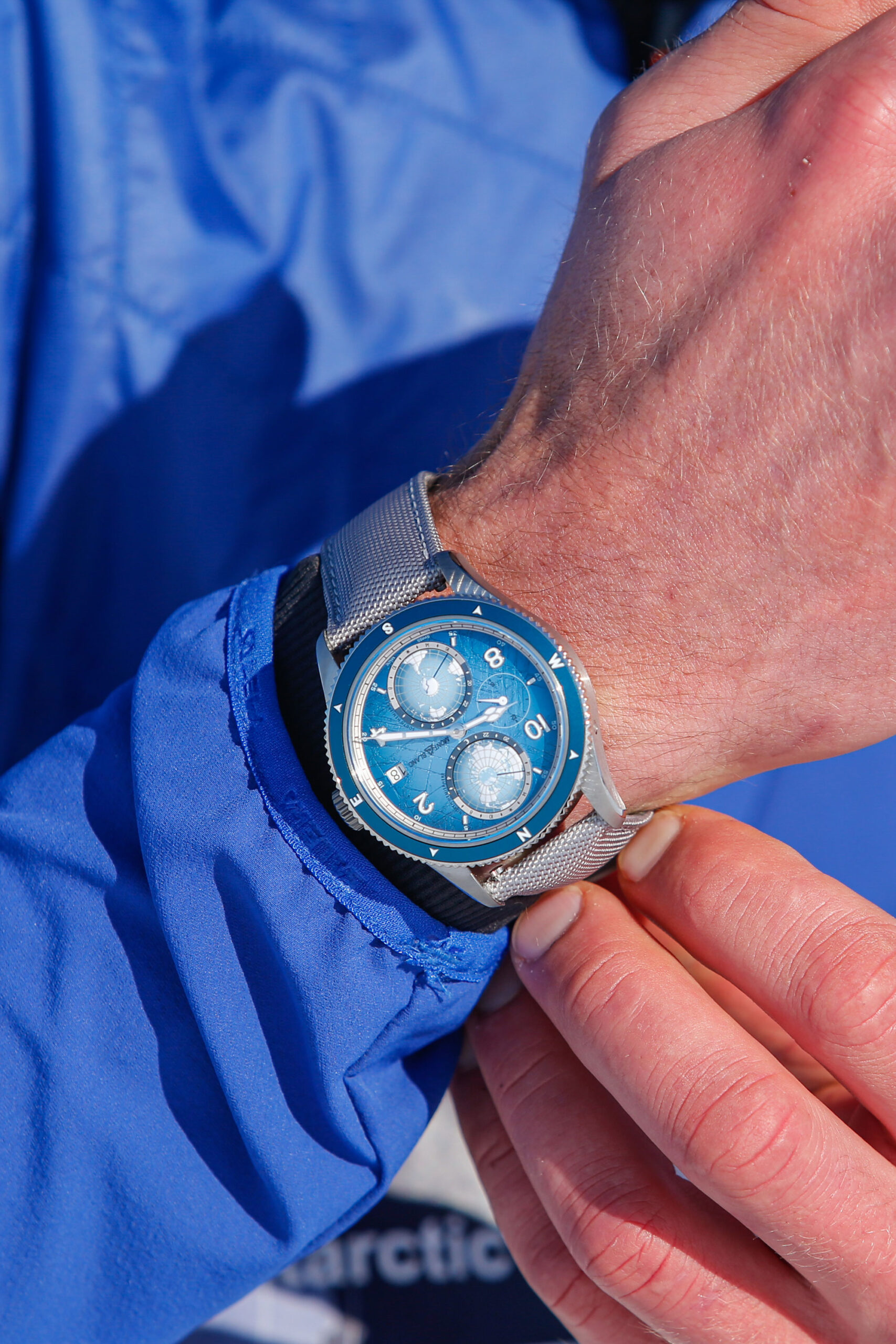
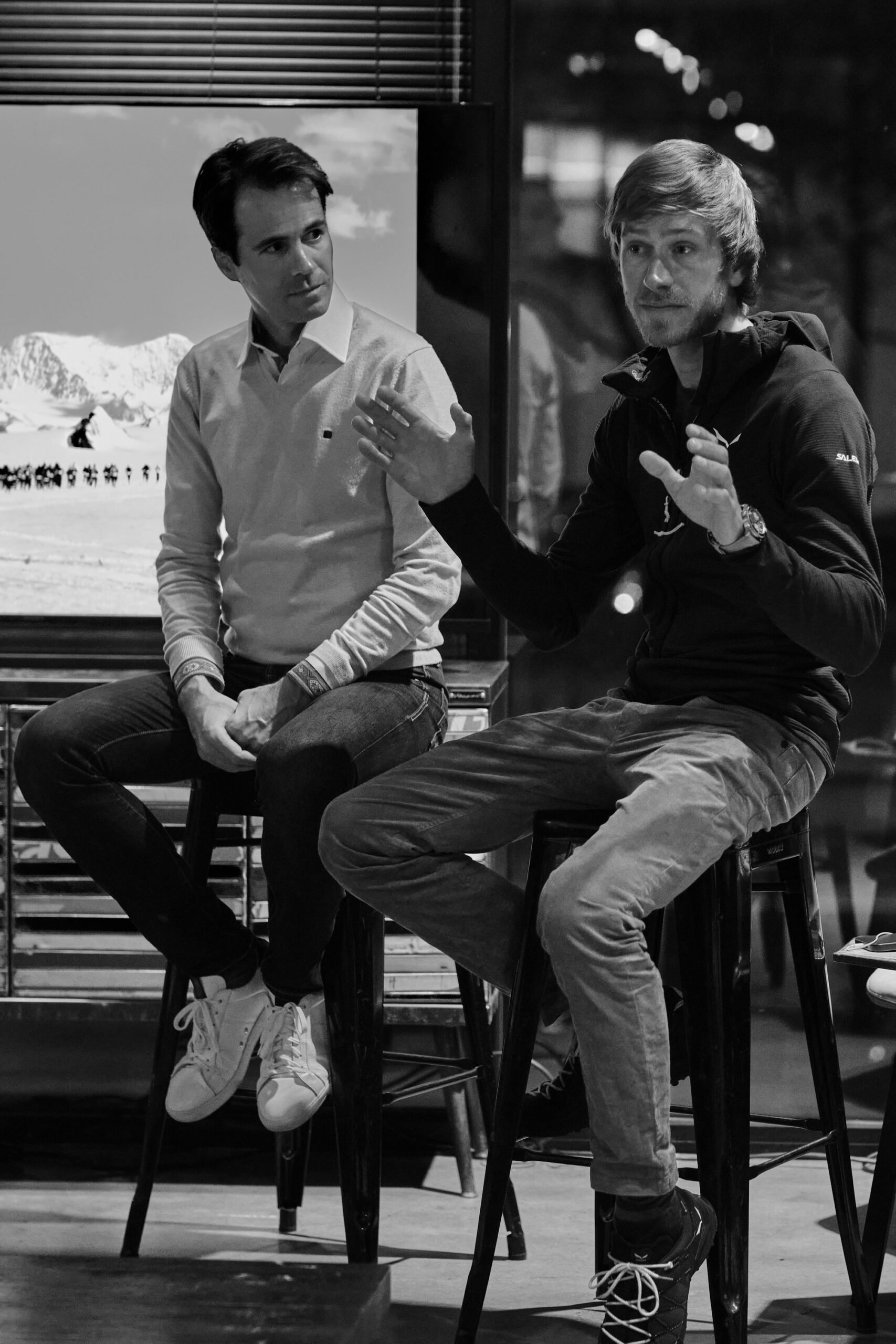
Only a couple of days after having completed the race (they came in seventh—together—among around 80 participants) Messner and Lecamp landed in New York City. We had a chance to sit down with them for an interview as well as a fireside chat with collectors at the Classic Car Club Manhattan.
With muscles still sore and skin still a little wind-burnt, they were able to confirm that the watch’s dial did indeed pair well chromatically with the glacial ice and that it remained perfectly fog-free. They also shared insights about life, mountain climbing and reflected on what it’s actually like to run a marathon in Antarctica. Here are the highlights of our broad-ranging chat.
The following interview has been edited for length and clarity
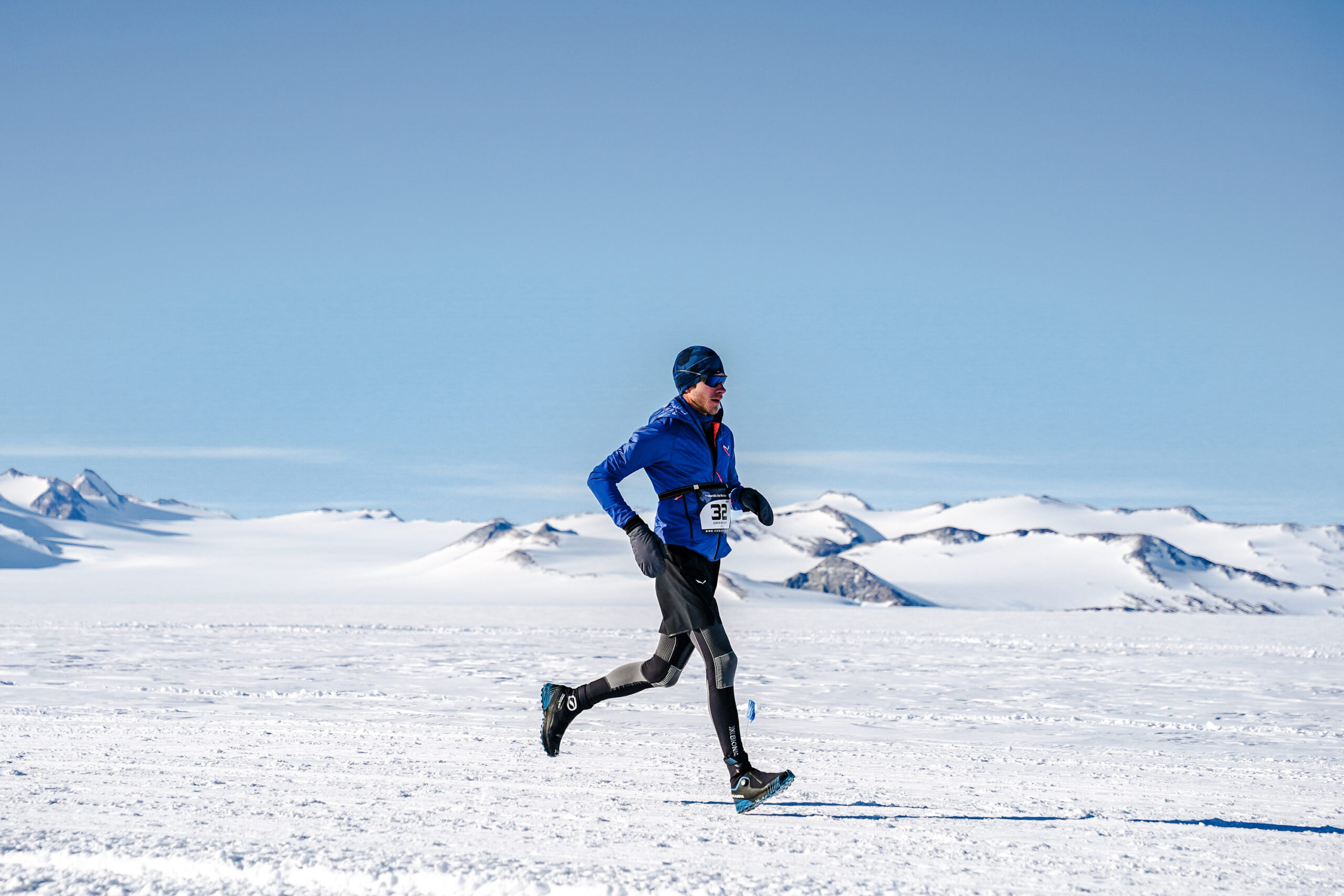
The Antarctic Ice Marathon is a standard 42.195 kilometers (26.219 miles) but facing katabatic winds and temperatures of around -30 degrees Celcius (-22 Fahrenheit). (Image: Montblanc)
Can anyone run an ice marathon? What does it take?
Simon Messner: You have to train a lot. For me, it was the first marathon I ever ran so I was not sure what to expect. It was quite tough. I would say that not everybody could do this. You have to really want to. I’m coming from mountaineering and it’s the same rule: you have to really, really want to do it, and I think it’s the same for this marathon.
Laurent Lecamp: For me, it’s all mental. I would say that if someone wants to do it, he can do it if he or she is willing to train regularly, three or four times a week. It’s just a question of time. If you’re willing to give up a lot of things to reach your goal, it’s possible. An example: we saw a guy who was 81 years old, and he was running the half-marathon. In the end, it means that everything is possible, but you have to train. So yes, it’s possible. For people who say it’s only for the elite, only for a few people—forget it, that’s not true.
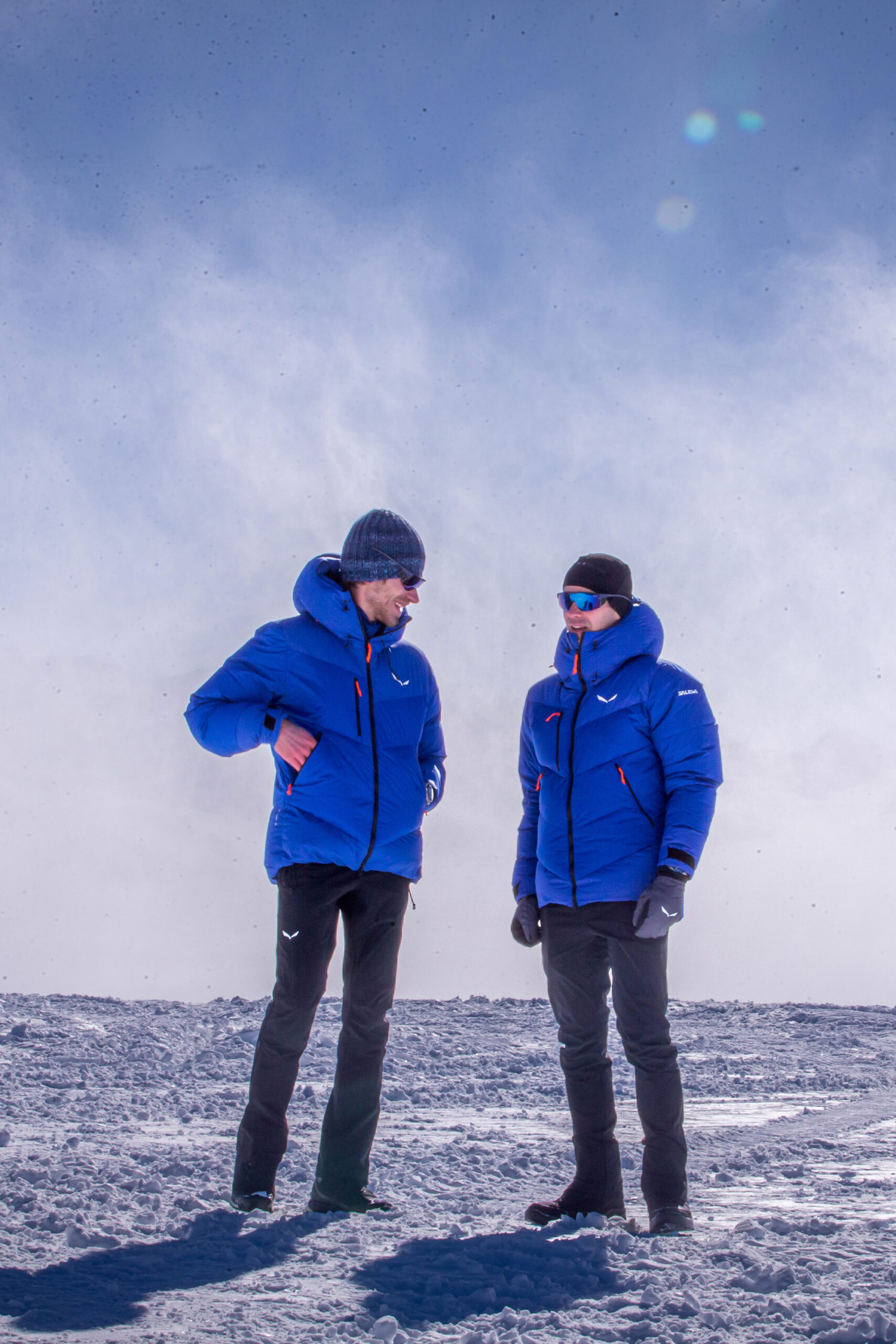
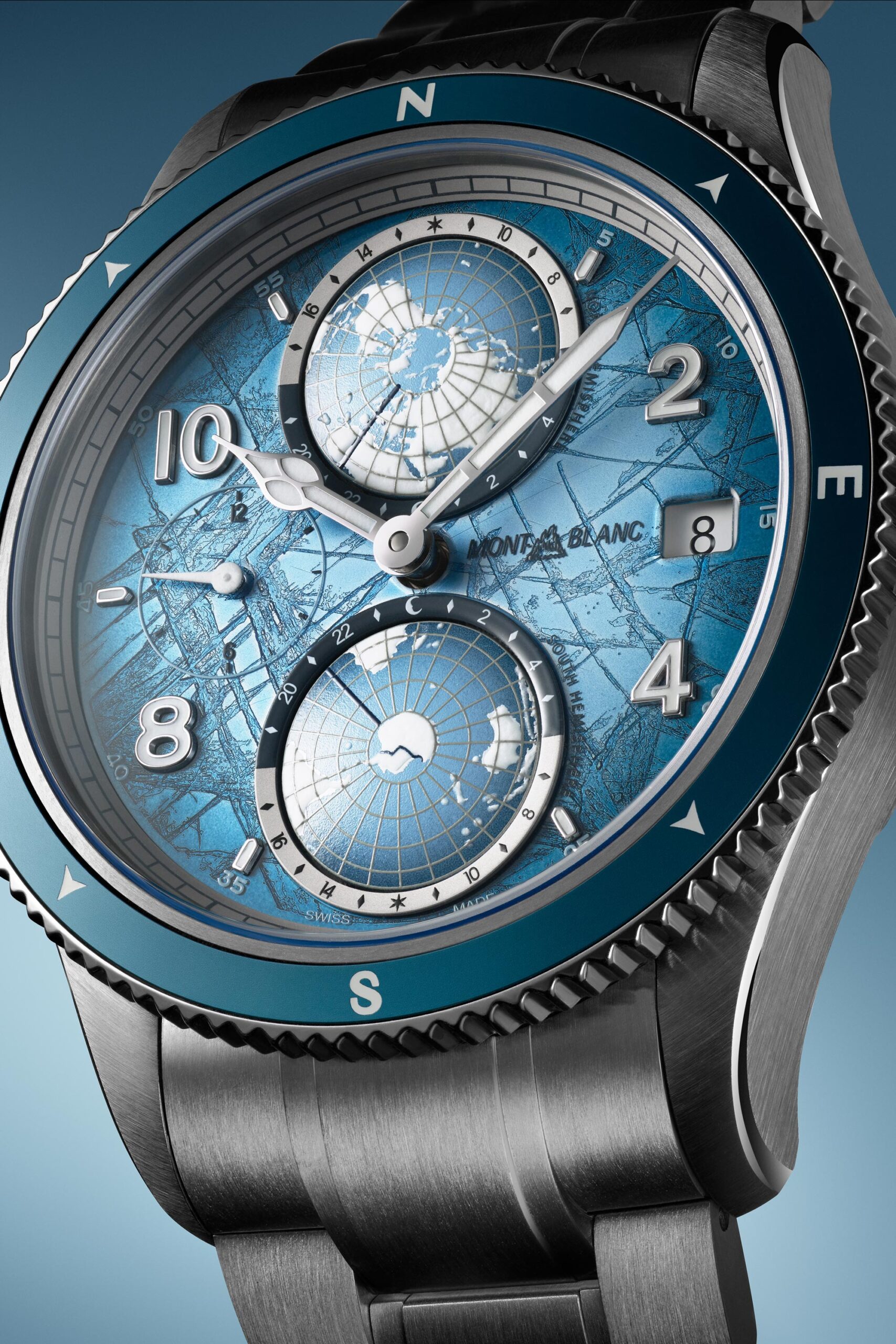
What was it like getting to Antarctica? What was it like to be there?
Messner: We were flying along the coast, and it’s never-ending. It’s hard to explain, but you need hours, and it’s just ice, ice, ice, 4 kilometers thick. My brain cannot understand this.
Lecamp: You just have to imagine when you land. The place we went was extremely windy, and all the snow was blown away and we could see the ice. And I was observing this from the plane and the pilot said “landing,” and I said “no, he will not do it.” The plane was a [Boeing] 757-200, so a huge one, and it was landing on the ice. For me it was “merde, how is this possible?” And this is where the experience started.
Everybody was at the window observing what was happening. It was 20 degrees [Celcius] inside and then you go out and it’s -30 degrees. Then you go back to the camp where we discovered our tent where we slept for three nights, or tried to sleep.
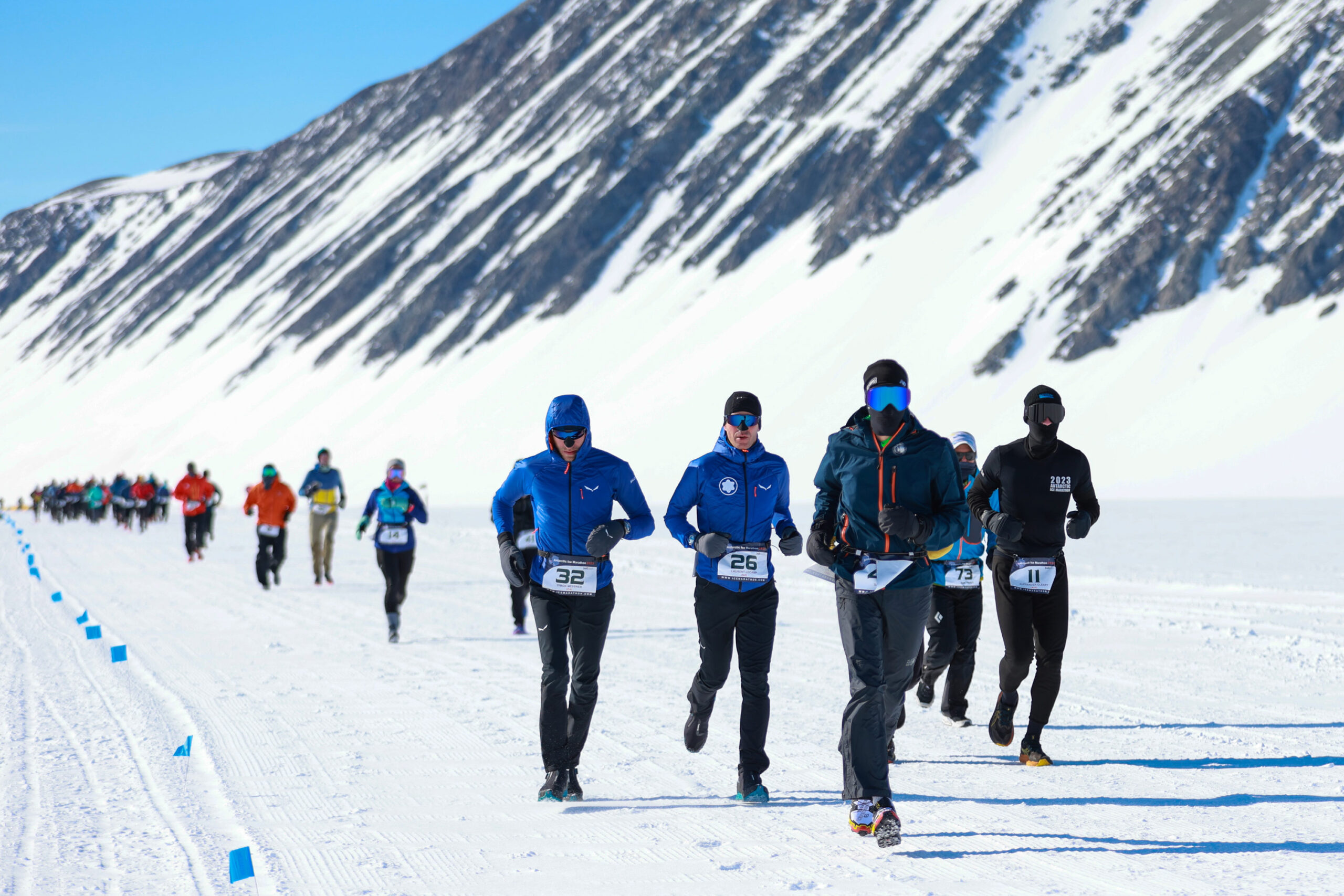
Among around 80 participants, Messner and Lecamp finished the 2023 Antarctic Ice Marathon together in 7th place. (Image: Montblanc)
So, the day comes and you start running. What was underfoot? Ice? Snow? What was the marathon itself like?
Lecamp: It’s a glacier. If you remove the snow you see the glacier. It was hard to predict the next step. You have to pay attention and you always have to focus on what’s in front of you. It’s completely different from a normal marathon.
Simon said, it’s not 42 kilometers, and he’s right. I run normal marathons which are 42 kilometers, but here the feeling was 55 or 60 kilometers. It’s different because you have snow, it’s slippery, you have strong winds, it’s extremely cold, feeling like -30. So when it’s -30 and you have the wind in front of you and all the snow and all the ice just below, one step is not like one step in a regular marathon.
Messner: I’ve always run as part of my mountaineering preparation, but always uphill. It’s not difficult anymore. But starting to run longer distances, in the snow in the rain, to figure out how it works—it was very tough. I could do this walking with a heavy bag, but running was another game. It started becoming interesting after 30 kilometers.
What was the toughest part? Was there a time that you wanted to give up?
Lecamp: The last kilometers were a huge pain. I’m used to running on snow and ice, so the first 30 kilometers was no issue at all. But frankly speaking, during the last kilometers I had this issue here [indicates inner thigh] and at every step as I was running I could feel the contraction on my face. I don’t know what happened that time, but when you’re on the snow and the ice you’re not stable, and I had this pain.
So that was difficult because you say “will I be able to make it to the end?” We said we should finish because we have the watch, and everybody will ask. We have the interview, so what can we say if we don’t manage it [laughs]? And it’s once in a lifetime, so giving up wasn’t an option.
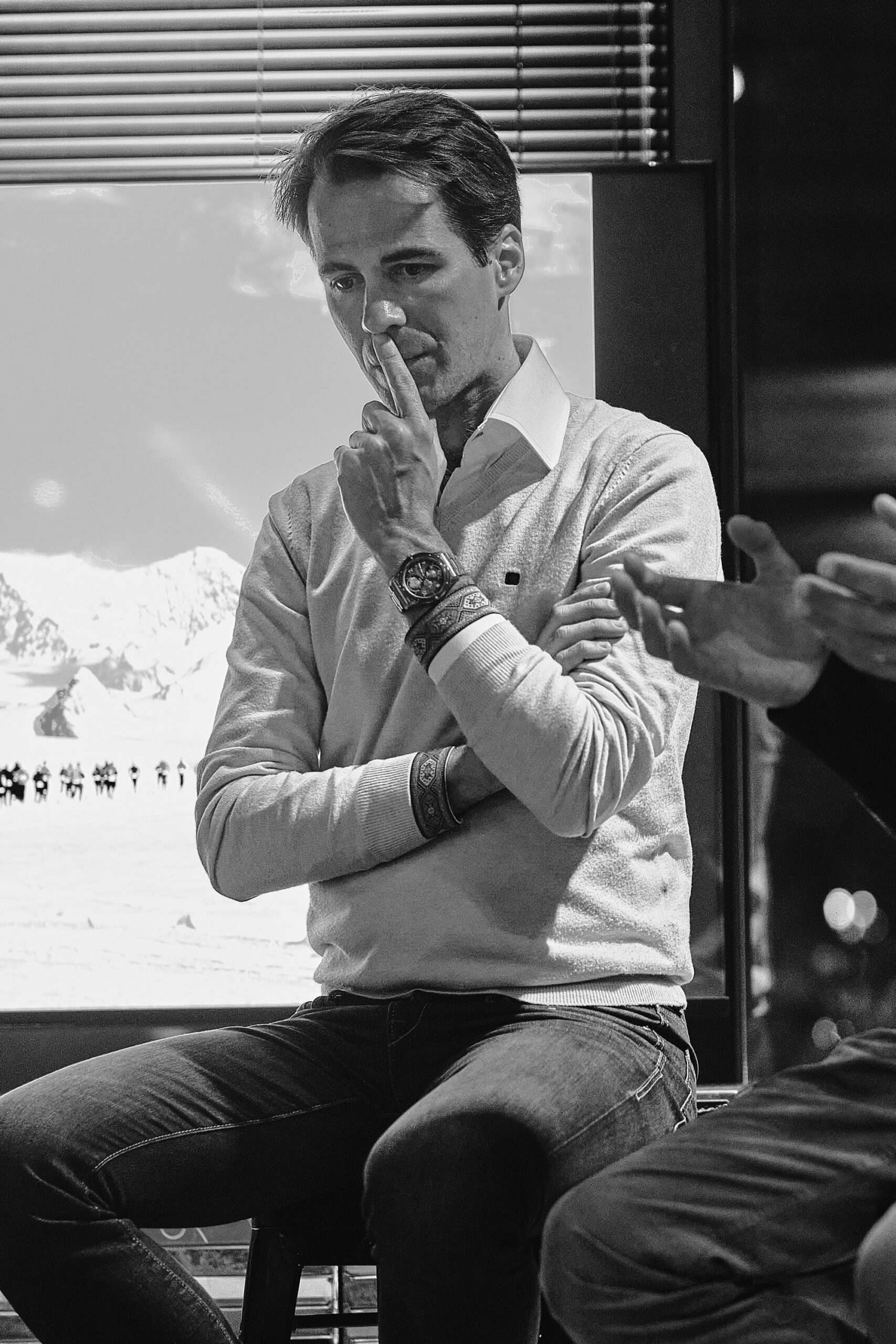
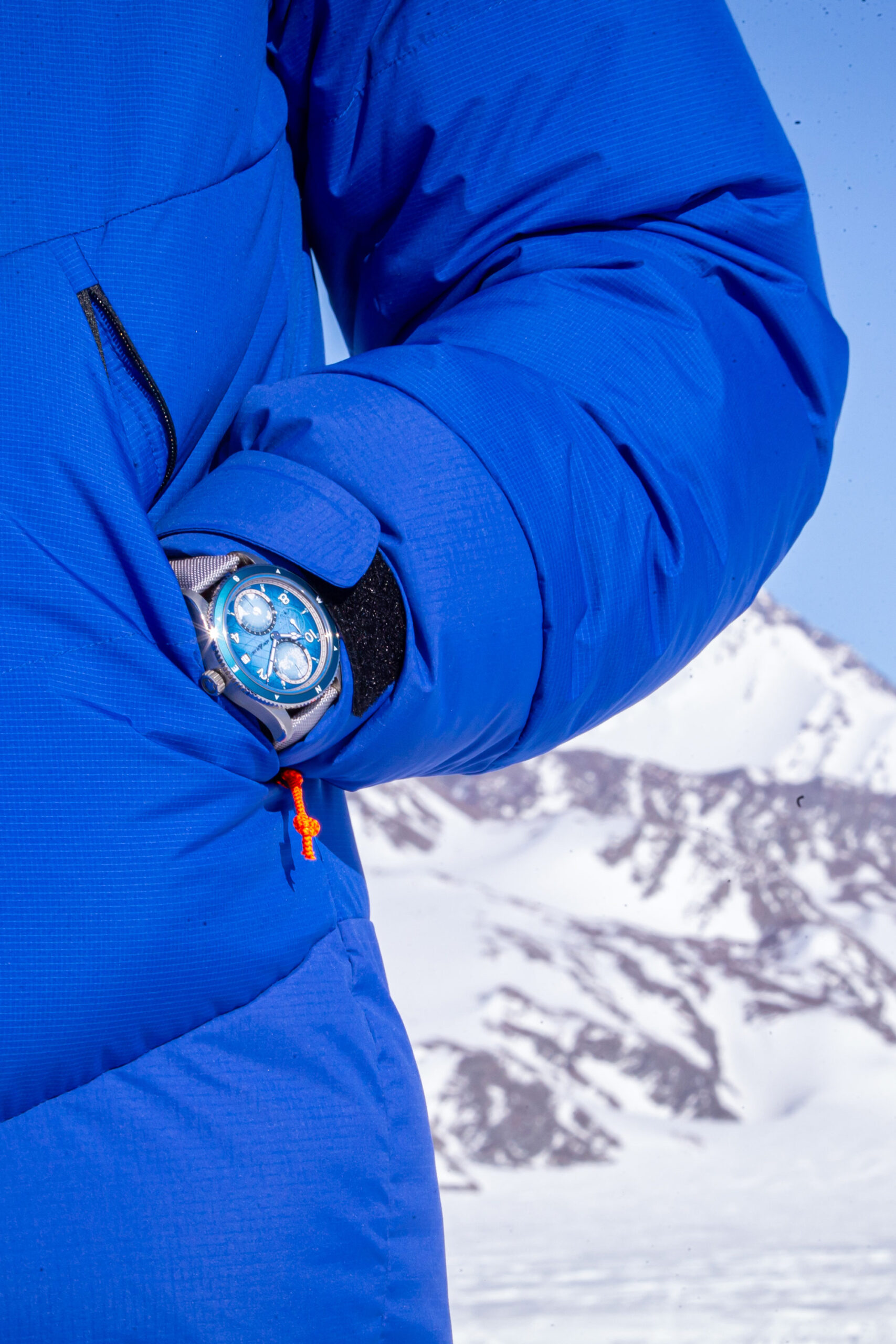
Was there anything you weren’t expecting or weren’t prepared for?
Lecamp: If you want to pee, you cannot. In Antarctica, it’s forbidden. That’s something we didn’t know about. Every five kilometers you have a checkpoint with toilets, but they say in between it’s impossible to pee. They say that if you do it, they have to cut the ice and everything around it to remove it because it has to be pure. Otherwise it’ll be there for the next 100 years.
We thought it was a joke but it was not, they repeated it many, many times. So that’s a stress because, you know, you pass a checkpoint and after two kilometers you have to wait three kilometers. And in the cold, it’s not the same. Imagine you have to go to the toilet, but I say “ok, first you have to walk four kilometers.”
Messner: It’s summer there so it was, for three days, always day. This is something I wasn’t expecting.
Lecamp: Yes. Because the tent is heated by the sun, it’s completely light inside. For us, it was like lying on the beach under the sun all day long and all night long. So I remember the first night: you don’t sleep. You have the excitement, you have the sunlight, you have jetlag. One night, Simon said “did you hear that?” It was the opening of a crevice which is very typical in the mountains. So then I couldn’t sleep at all.
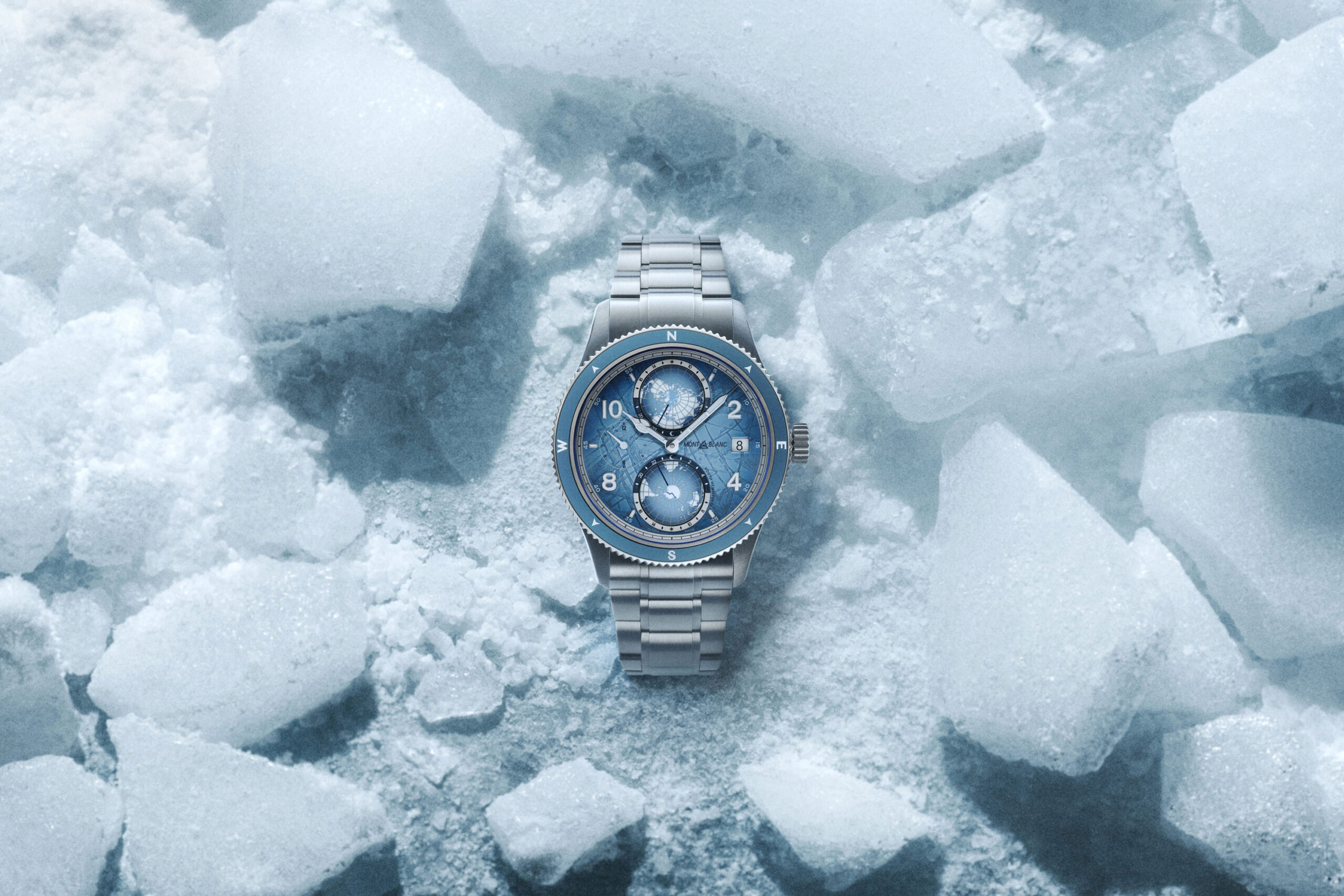
The Montblanc 1858 Geosphere Zero Oxygen features an oxygen free case in tribute to Reinhold Messner's historic mountain ascents without the use of supplemental oxygen. The first watch to feature an oxygen-free case means much slower aging of the components and oils as well as avoiding condensation inside the crystal in freezing temperatures. (Image: Montblanc)
Did the watch perform as expected?
Lecamp: We received so many questions from runners. Runners were asking a lot of questions about the watch. They said “why do you have a mechanical watch?” And we explained it to them. One of them had a mechanical watch and he had some drops [condensation] inside and he could not see [the time]. Because in the tent it was 15 degrees and it was -30 outside. So the 45 degree difference makes the humidity inside the watch [condensate on the glass]. But it doesn’t happen with our watches because there is zero oxygen inside.
Why zero oxygen? Because we were inspired by Reinhold Messner who was the first to climb the highest peaks in the world with no supplemental oxygen. And Simon, every time he climbs, he never uses oxygen.
Did you see the kind of glacial ice which inspired the dial of this 1858 Geosphere watch?
Lecamp: On the other side of here [indicating on a photograph], we saw a huge glacier with a specific blue, and the blue of the glacier was the same as the dial. For the dial, we were working with the team to create the same color as the glacier from Antarctica, and we created this. So it means that you have the real color of the glacier.
And one dial requires 30 days to be produced. Gratte boisse is the process we’re using to create this dial. It’s an old process from the 19th century, it’s made by hand. The thickness is 0.4mm, but we can create the depths of the glacier thanks to this technique. And it seems we are the last ones in Switzerland using it.
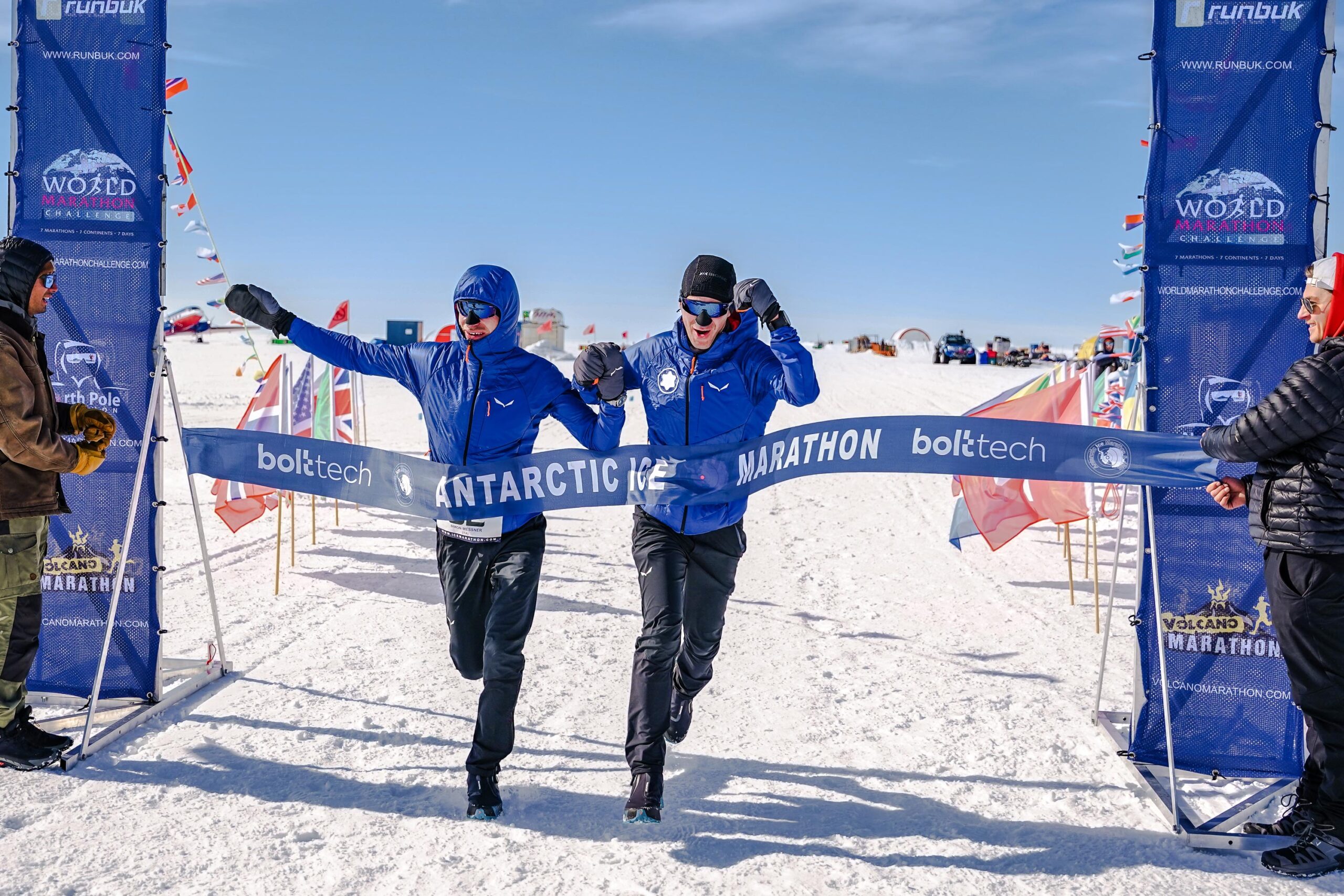
Though advised against it, Messner and Lecamp insisted on racing together and were the first ever to complete the Antarctic Ice Marathon as a team. (Image: Montblanc)
You climb mountains. You run ice marathons. Why? Is climbing fun? Is there pleasure in the experience?
Messner: There is not. The first marathon is the same. There’s not pleasure, there’s not joy. That comes afterwards. [At the top?] Mmm, no. The last successful expeditions I did, at the top you’re just totally exhausted. You just feel lucky that you don’t have to go further. The joy, if it’s there, comes afterwards, maybe weeks afterwards.
Does the joy of mountain climbing come from the sense of achievement? From satisfaction or bragging rights? Or is it something else?
Messner: Every young climber thinks doing a bivouac would be amazing, sleeping up there in the mountains. At some point, there comes the time where you have to do it and you’re not prepared. You will not sleep a second, it’s very cold, you’re sitting there just shivering. Again, it’s not fun. But afterwards you know exactly what it means to have a simple bed or just a warm place. If you’ve ever been really thirsty, a simple glass of water is the best thing.
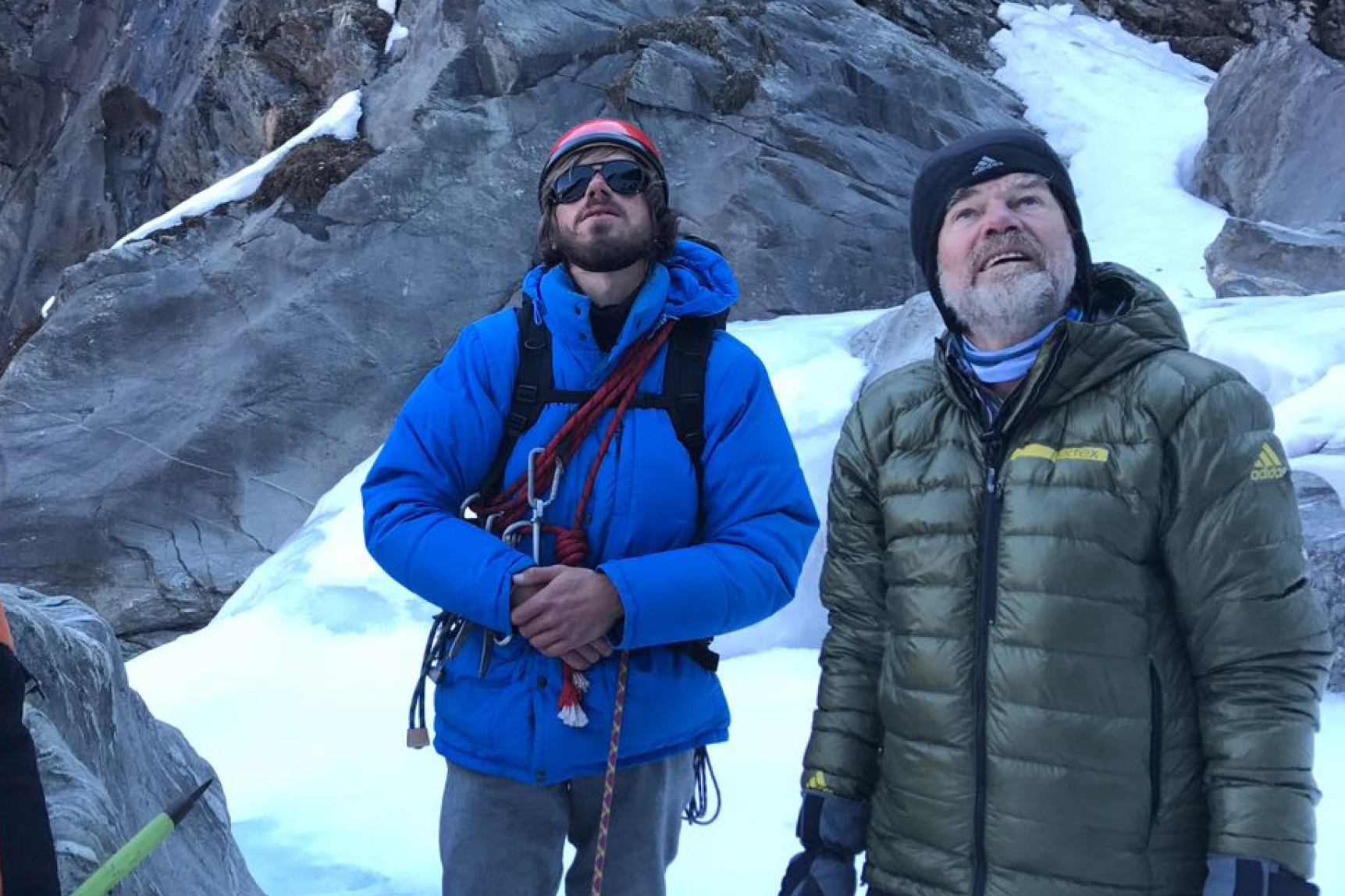
Simon (left) with his father Reinhold Messner. (Image: reinhold-messner.de)
You had a fear of heights as a child. How did you go from vertigo to climbing mountains?
Messner: Mountaineering, as you can imagine, was totally normal for us, me and my two sisters. At some point I just wanted to experience it for myself. So I went for my first time alone, and I noticed I had this very strong vertigo. It started two meters off the ground. And this was something I could not accept for myself, so I wanted to know where this fear is coming from and why I’m not able to handle this. It was more the question of where the fear is coming from than the climbing itself which motivated me.
Did your father encourage you to follow in his footsteps or give you any advice that you particularly remember?
Messner: My father always said “I don’t like that you climb. You are free, you can do what you want. But I’ll give you one piece of advice: if you climb, never fall.” It’s very simple. You have to distinguish the sport of climbing from alpinism. In alpine climbing, it sounds very simple, but it’s an old rule: you’re not allowed to fall. If you do fall once, maybe you survive. Two times, maybe. But the third time, maybe not.
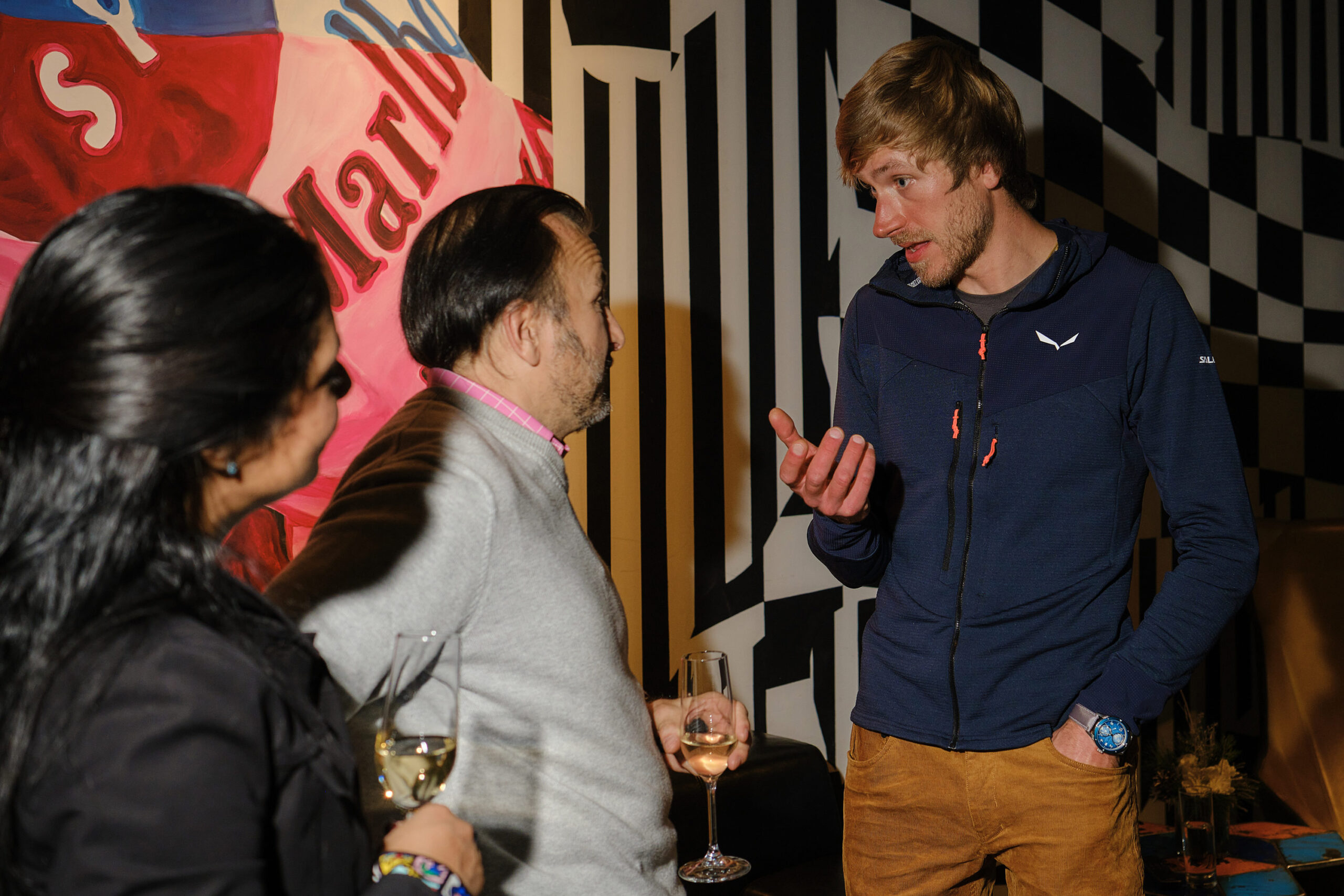
Simon Messner speaks with watch collectors at the Classic Car Club Manhattan about mountaineering, the Alpinist mindset and more following completion of the Antarctic Ice Marathon. (Image: Troy Barmore)
Mountain climbing is dangerous. Is that a good thing?
Messner: When I was young I always knew that you can die. It’s possible, but it was ok for me. But if you’re in this field for many years, and I’ve been climbing for 16 or 17 years, you lose a lot of friends and a lot of people you know. So you start thinking. And I think that the highest art is knowing when to stop, so I keep this in mind. If you follow the highest[-level] climbers in the world, they will not get old. This is a fact.
I once interviewed Reinhold Messner, your father, and he told me that his is “the art of reduction, reduction, reduction.” Is this your approach, to eschew equipment and technology?
Messner: It’s the mindset of alpine-style climbing. You don’t use fixed ropes, no help from porters, no artificial oxygen. For me, it’s very important what the climbing society thinks of a climber. It’s much more important than what all the other people think. The greatest, “most difficult climb” is done with the least equipment, so just your strength and your mind.
It’s very simple thinking. It’s about using less technology because you see here in New York what is possible with all the technology. So in mountaineering if you use all this, at some point we don’t need to invest our energy anymore or our skills. This mindset is still present in the Dolomites where I was raised as a climber. It’s a very old tradition. So, we are not swimmers in the Alps.
What would be the perfect soundtrack for running the Antarctic Ice Marathon?
Lecamp: The ERA songs “Ameno” or “If You Shout.”
Learn more about the Montblanc 1858 Geosphere Zero Oxygen South Pole Exploration Limited Edition here




